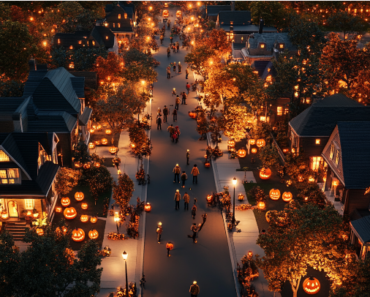One of the big questions in the prepping and survival community is that of building a bunker as a survival shelter. People go back and forth on this issue, with most people writing articles in favor of building them. Having grown up in a home with a built-in concrete bunker that had been there for decades, I’m familiar with them, their history and their usefulness. I’ve also seen how people in the prepping community build bunkers and have heard their reasoning for doing so.
The idea of bunkers actually started back in World War II. Probably the most famous bunker from that period was the Führerbunker that was constructed on the grounds of the German Chancellery in Berlin. That particular bunker was a six-story underground office complex, designed to protect Adolf Hitler and his immediate staff. He had a similar bunker at the Wolf’s Lair, his command post in the field. Other high officials in his government and military had bunkers as well, all built with the purpose of helping the German high command, both civilian and military, survive Allied bombing.
The Germans weren’t the only ones building bunkers though. The Luftwaffe’s bombing of England forced the British military to build bunkers for some of their more critical military installations, especially those on the southern part of the island, where they were more prone to attack. Many of the Royal Air Force’s war rooms, used for exercising command and control, were located underground, to protect them from aerial attack.
In the Pacific War, bunkers were built by Marines and Army on a number of the islands they occupied, as protection against naval gunfire and artillery. Such attack could be even worse than aerial attack, as the larger naval guns of that day were more powerful than the bombs dropped by aircraft. In either case, a bomb dropped from an aircraft and an explosive shell fired from naval artillery are roughly the same on the receiving end.
That idea of using bunkers as protection from aerial attack quickly spread across the Atlantic, based on the risk of the Luftwaffe bombing the East Coast of the United States with long-range bombers. As the German government maintained long-distance flights to South America, through Lufthansa, their ostentatiously civilian airline, it was believed that they had the ability to bomb New York, and possibly other ports on the East Coast. The bunker we had in the old house I grew up in had been built with those potential attacks in mind.
After World War II ended, we almost immediately entered into the Cold War and its accompanying risk of thermonuclear war with the Soviet Union. Once again, there was good reason for concern, as a nuclear strike would likely destroy everything above ground, within a few miles of each explosion and then there was living through the fallout after that. People built fallout shelters, another form of bunker, to survive such an event. For those who lived in the city or near any military target, a fallout shelter was an essential for surviving nuclear war.
Bunkers Then, Versus Bunkers Now
As we can see from all this history, bunkers have served a very particular purpose in the past. Even in Iraq, the bunkers that Saddam Hussein had built were mostly to protect his military headquarters units from aerial bombardment. Yet you don’t hear anything about aerial bombardment in the conversations that preppers have about building bunkers. Rather, they talk about building bunkers to protect themselves from hordes of hungry people, during a breakdown of society.
Can bunkers protect us during such times? I’m not sure. That depends a lot on the bunker. Most bunkers I see have a lot of problems from the defensive standpoint. For example, the entryway and the emergency escape are usually way too close to each other. Anyone trying to escape through the emergency exit is readily visible to those who are attacking the main entrance, allowing those attackers to shift their attack. Even hiding that exit in a bush won’t help, if it is close enough that they can easily find it.
Locking yourself into a bunker, without a good means of escape, is essentially trusting in the attackers giving up and going away. That might work and it might not, depending on the attackers. I wouldn’t want to trust in them leaving, as there can always be that one person who decides it would be better to kill you in place, even if they can’t get what you have.
Any bunker has to be built with the idea of being able to defend yourself from attack. Just keeping yourself hidden from view may not be enough. Pretty much anything can be broken into, if the attacker is determined enough. You may have to take some active part in defending your bunker, before they can break in. Plan for that and build your bunker and any outer defenses to facilitate your defenses.
With this in mind, I’ve always thought that if I was to build a bunker, I’d do it more like an underground house, with one side semi-open in the hillside. That side would be protected by a concrete wall, providing me with a fighting position. I’d also build a turret sticking up above the middle of the bunker, allowing me 360 degrees of fire, so as to be able to defend from attacks coming from other directions. Obviously, I couldn’t be in the turret and the front firing position at the same time, so I’d make sure I had some other shooters with me.
The other big problem with many bunkers today, is that they don’t have a secure air-handling system. The easiest way to kill anyone in a bunker is to back up a truck and attach a hose from the tailpipe to the bunker’s air inlet. With most bunkers I see, that wouldn’t be hard to do at all and there wouldn’t be anything to stop them; nor is there any way for the inhabitants of the bunker to protect themselves from such an attack. They would likely be forced to exit their bunker, right before the guns of their attackers.
For any bunker to be effective, it has to be well hidden from any aggressors. The adage in the US Army is “If you can see it, you can hit it and if you can hit it, you can destroy it.” That’s exactly what you don’t want to have happen. For that reason, you are actually better off building a bunker under your home, if you’re at a place where you’re going to be building a house. The other possibility is building it someplace where people are unlikely to come looking for you.
Keys to Building an Effective Bunker
There are lots of ways to design and build a bunker and you’ll ultimately have to choose what meets your needs. Your best option would be building the walls out of cinder block, on a concrete slab base, with another concrete slab overhead for the roof. Remember, someone might try driving a truck or SUV over your bunker, so it has to be strong enough to support that weight.
Let’s talk size for a moment. I’ve lived in a 33’ motorhome, with my family, and know how tight that can be. Many people think of a 30 or 40-foot shipping container as a good size for a bunker. Based on my experience living in that motorhome, that’s long enough for a living space, if laid out properly. But if you’re going to have an 8×40 foot living area, you will probably need at least another 8×20 area for storage. That’s where your water tank will go, as well as your stockpile of food and other supplies. you won’t have space in your living area for that. Somehow, you’ll need direct access from one to the other.
Any bunker’s vulnerable points are the entranceways and air inlet, as we discussed above. If you’re going to have an emergency exit, try to have it as far away from the entrance as possible. Tunneling 100 yards through a hill, so that your emergency exit is not visible from the entryway might be difficult, but it’s not an unreasonable action to take, if you can do it. Something similar might be done for an emergency air intake. Be sure to install a good air filtering system, which can deal with poisonous gases.
Make sure that the bottom end of your entry tunnel goes several feet below the entry to the living area. This extra tunnel space can be useful for water, in case of flooding, for dirt to fall into, in the case of an earthquake, and as a place for grenades or dynamite to explode harmlessly, should they try and kill you that way.
As with anything else that’s built underground, the bunker has to be protected from filling up with water. That means several inches of loose rock or gravel underneath the floor, with a sump, so that water can be collected and pumped out, rather than getting inside the bunker. The same sort of sump and sump pump used in the basements of homes will work for a bunker.
Speaking of plumbing, that may very well be the most challenging part of constructing a bunker. If the bunker is being constructed as a place of safety during times of unrest, it has to be totally self-contained. That means having enough water stored to provide for the inhabitants’ needs, as well as a septic tank and leach field for wastewater. While you will probably want some ability to replenish your water supply, your main water tank should be big enough to supply your needs for at least a couple of weeks, if not months, in case you come under siege.
Electricity will be an issue as well. With the bunker being underground, you’re going to need electric power for lighting and air handling at a minimum. The bunker we had in the house I grew up in had a manual crank air pump to replenish the air. Take my word for it, you don’t want to do that, if you don’t absolutely have to.
Generators are good, but exhaust is problematic in an underground situation. Once again, they can find it and if they do, they can use it against you by simply blocking it. Solar is good as well, but can be easily cut off from the surface by the simple expedient of cutting wires. You would probably be better off with multiple means of producing electricity, as well as a battery backup system, so that if they cut one source, you still have power.




























